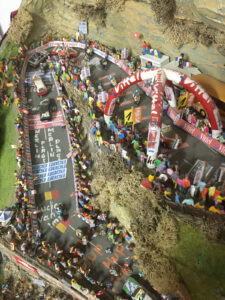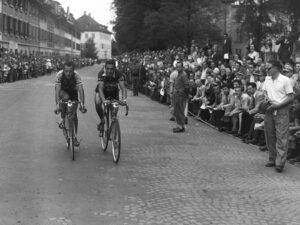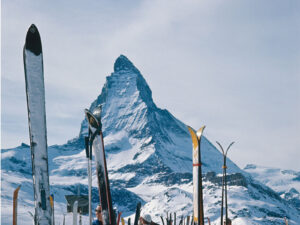
Beat Breu’s magnificent victory, in miniature
The history of Swiss cycling is full of thrilling stories. One of these is Beat Breu’s historic victory on the Alpe d’Huez in 1982. Much has already been written about this win. What very few people know, though, is that Beat Breu immortalised his victorious ride in meticulous detail in a terrain model.
Birth of the “Mountain Flea”
Beat Breu’s triumph on the Alpe d’Huez on 20 July 1982, full length version (crossing the finish line is at 48:00). YouTube / ina.ft
Triumph celebrates its 40th anniversary

Terrain model in the Museum of the Vélo-Club Fribourg
Wheels, races, glory. Swiss cycling
On the road, in the arena or across country: the exhibition presents the world of Swiss cycling in all its facets. Photographs tell the stories of mountain ascents, cycling acrobatics both highly skilled and unintentional, duels in the arena and out on the roads, and the good old military bicycle.



